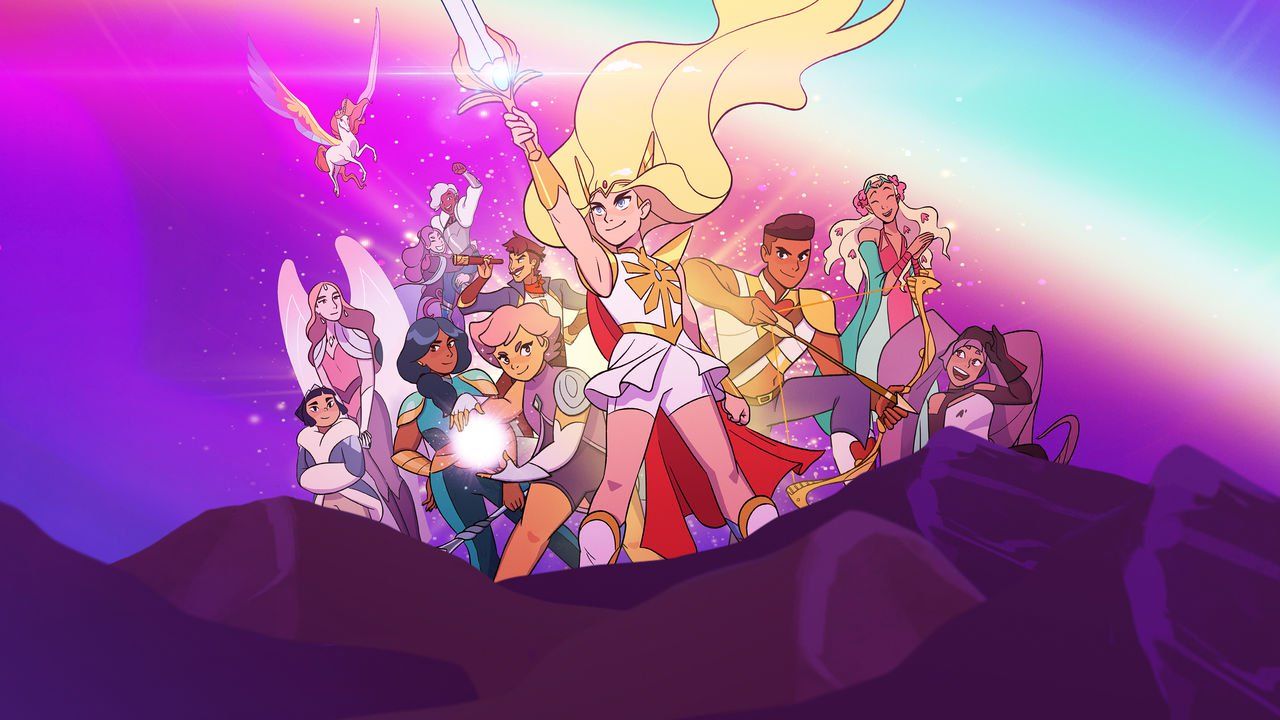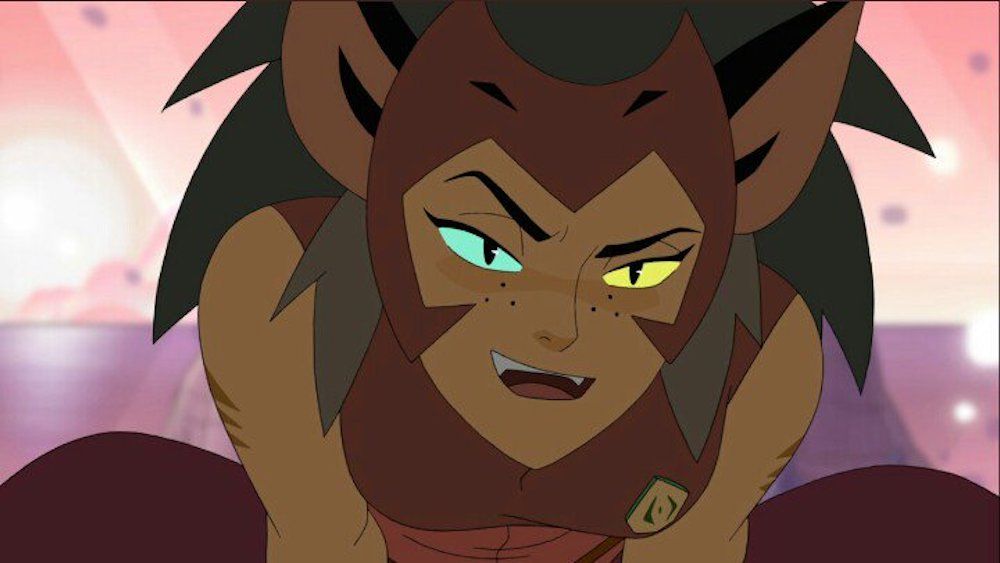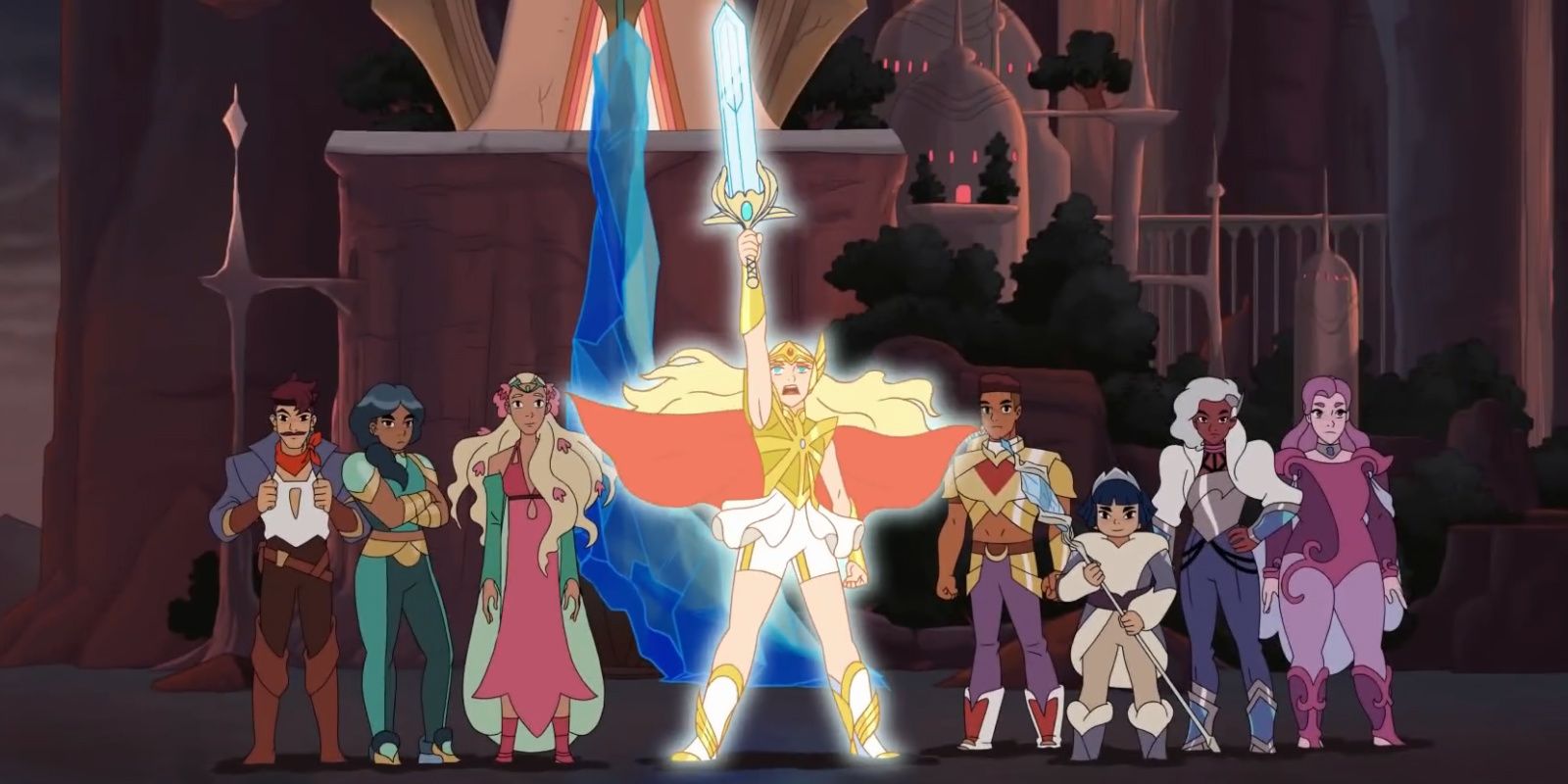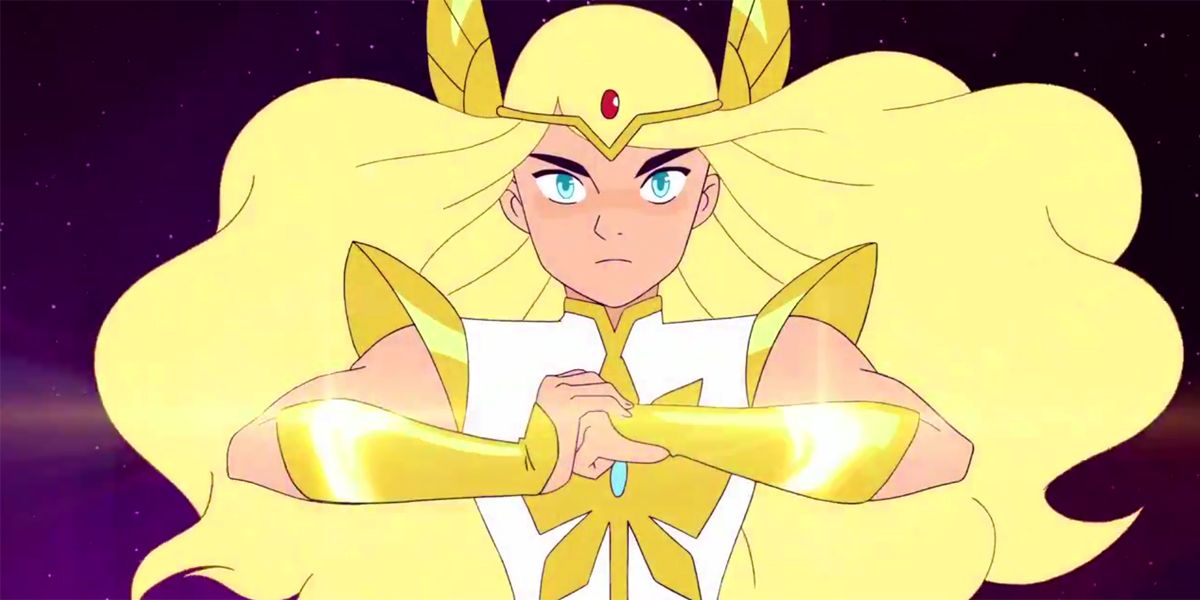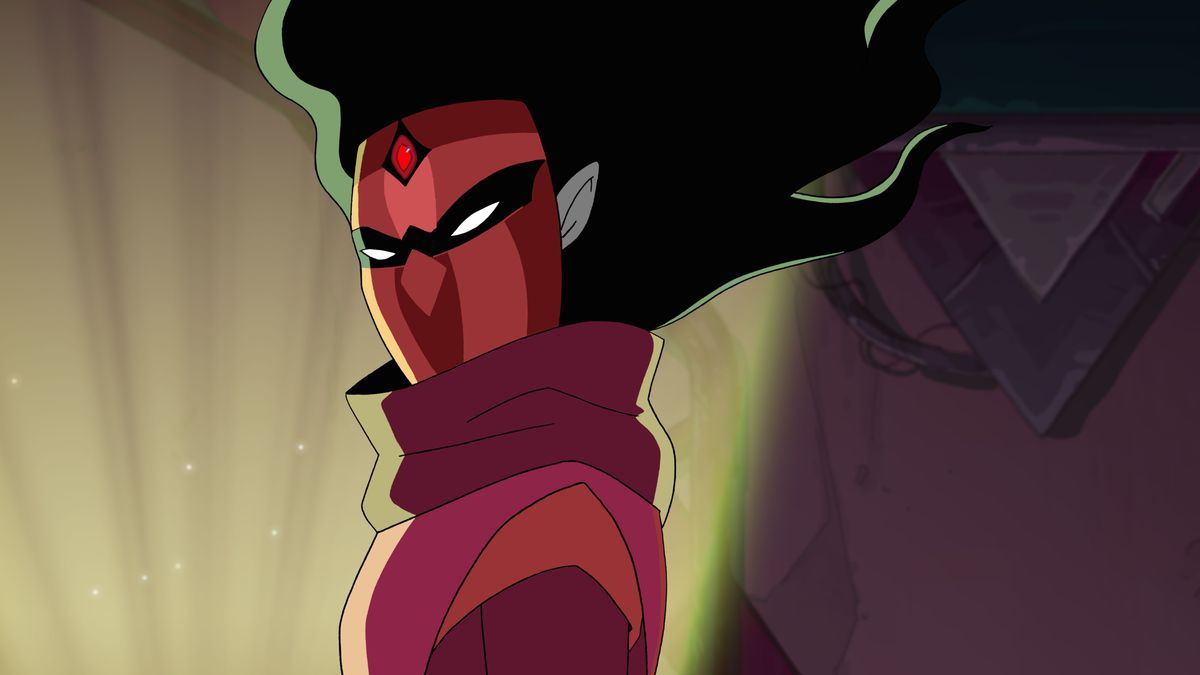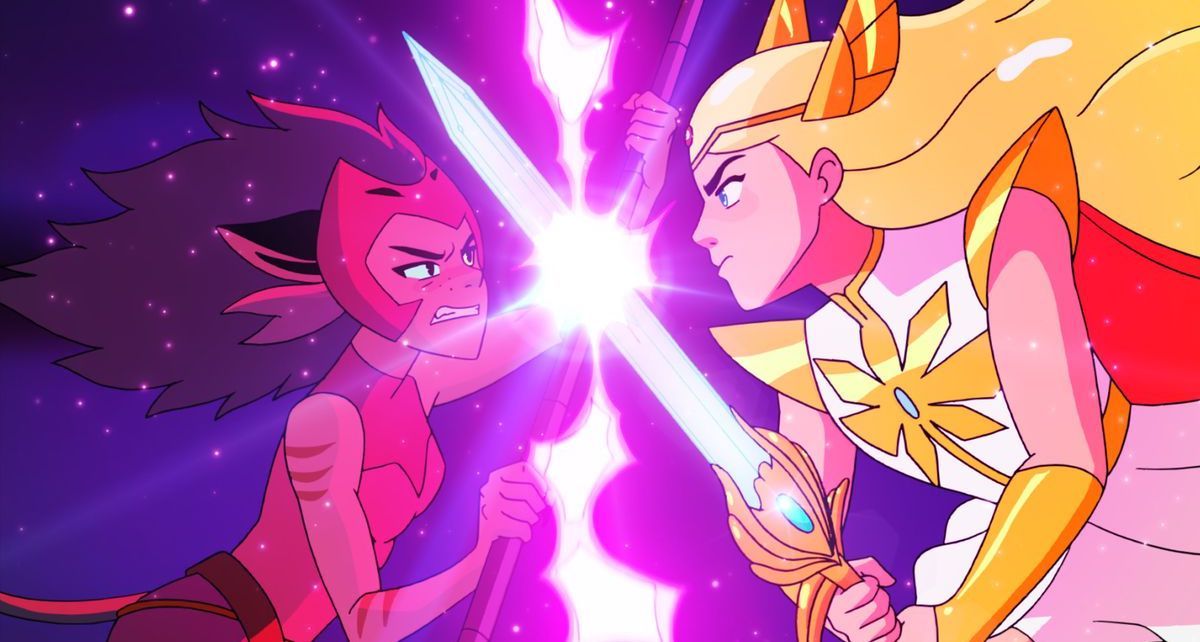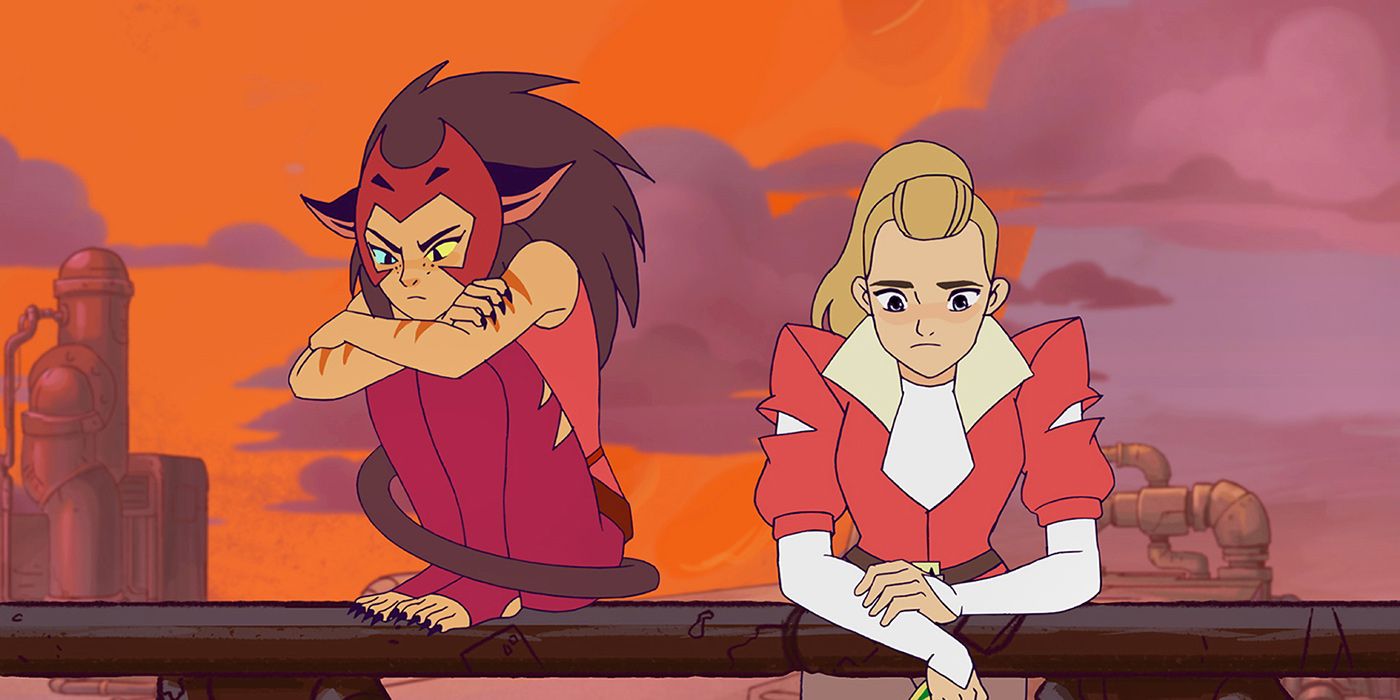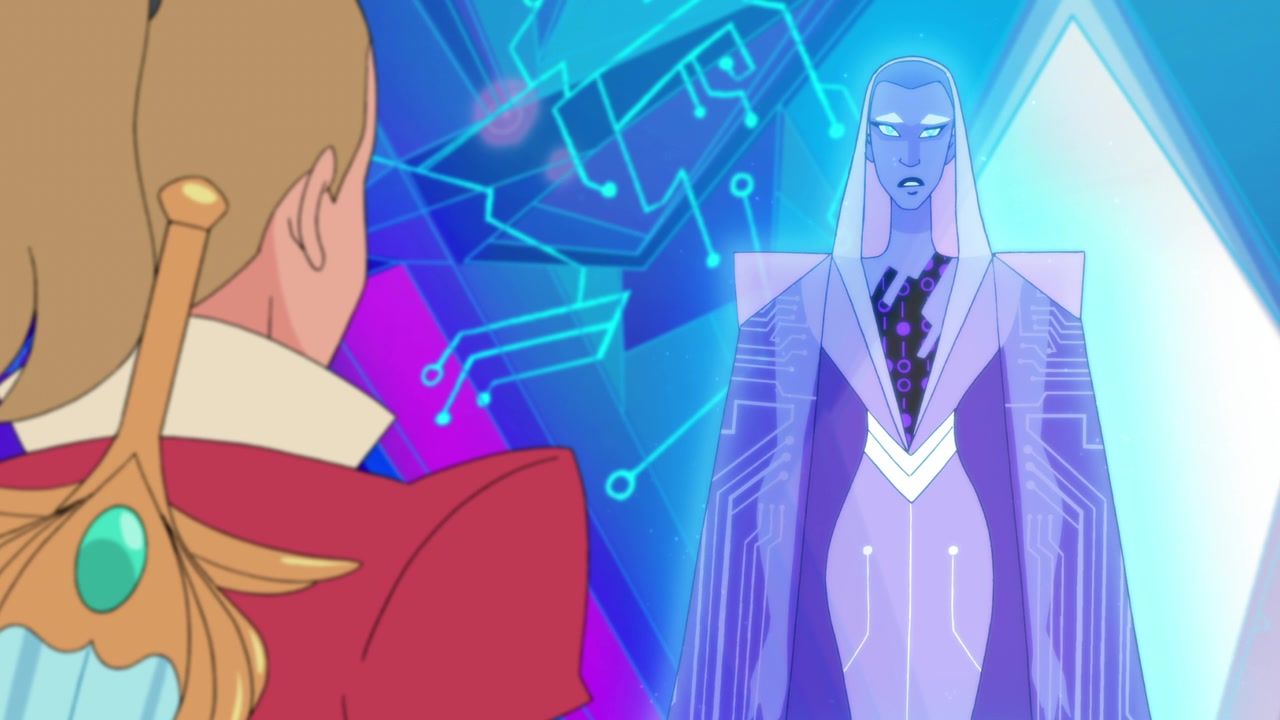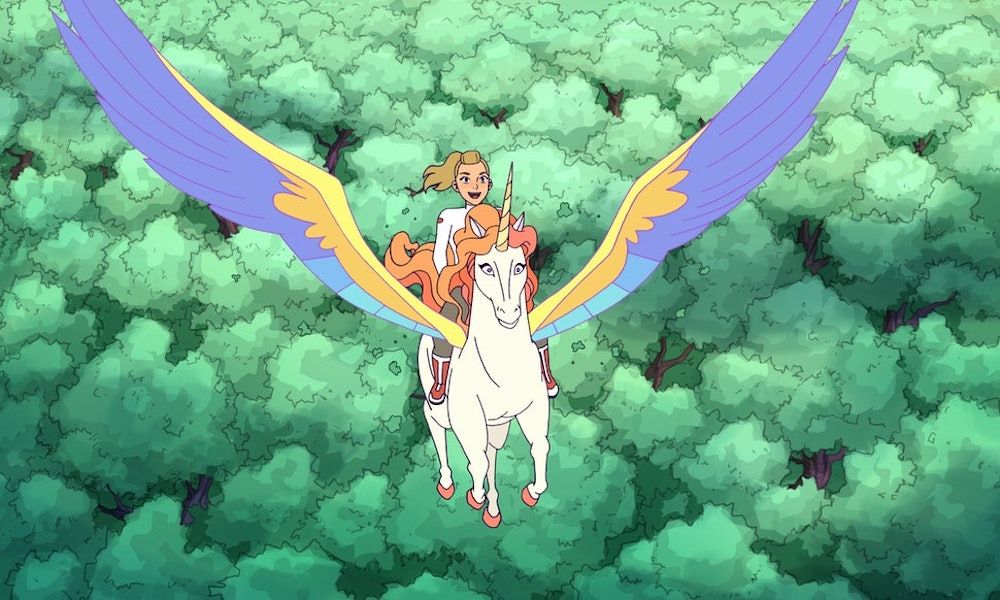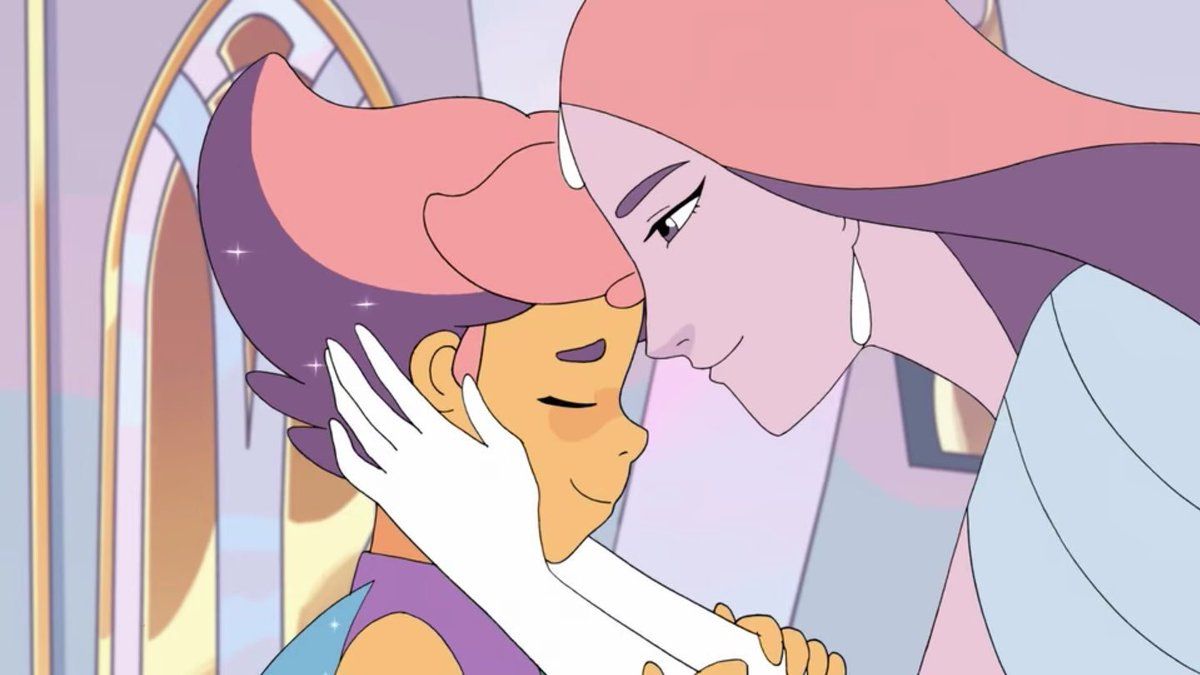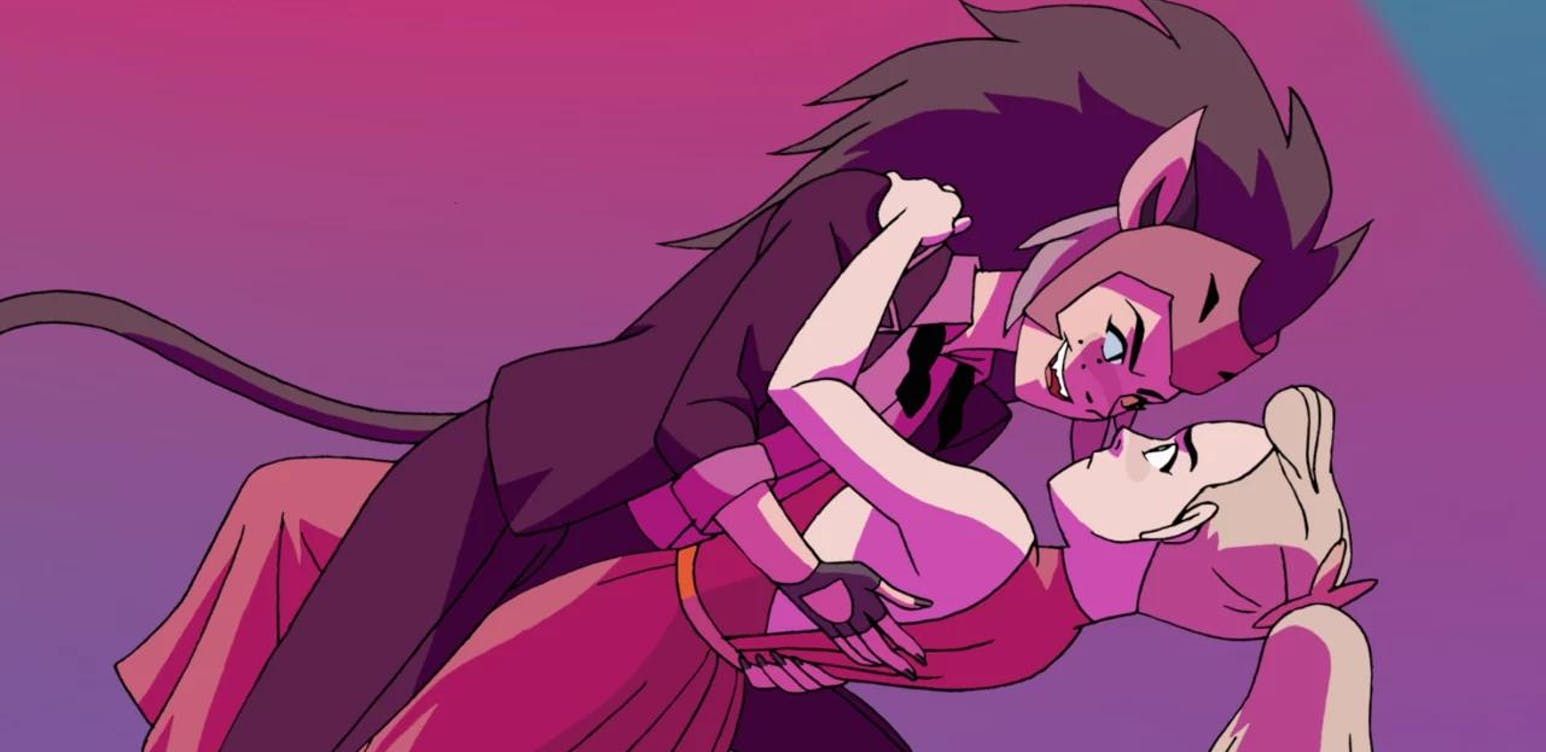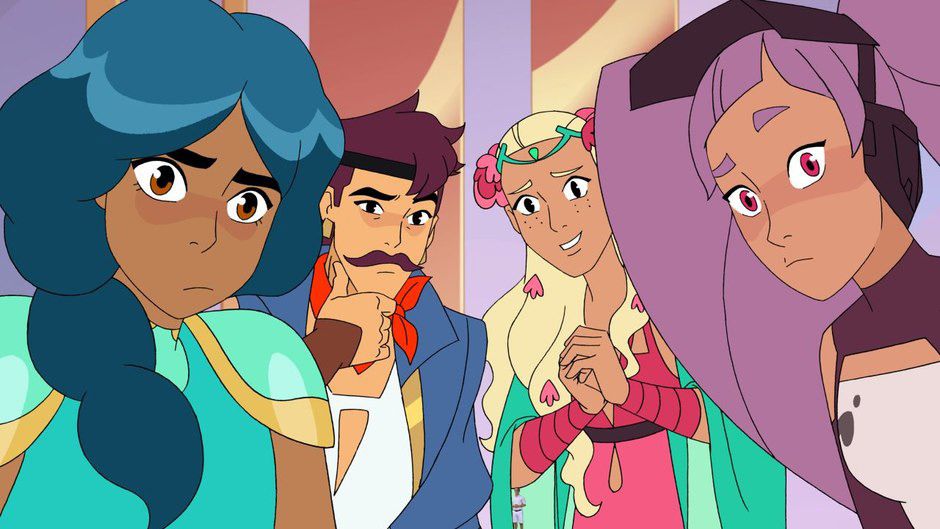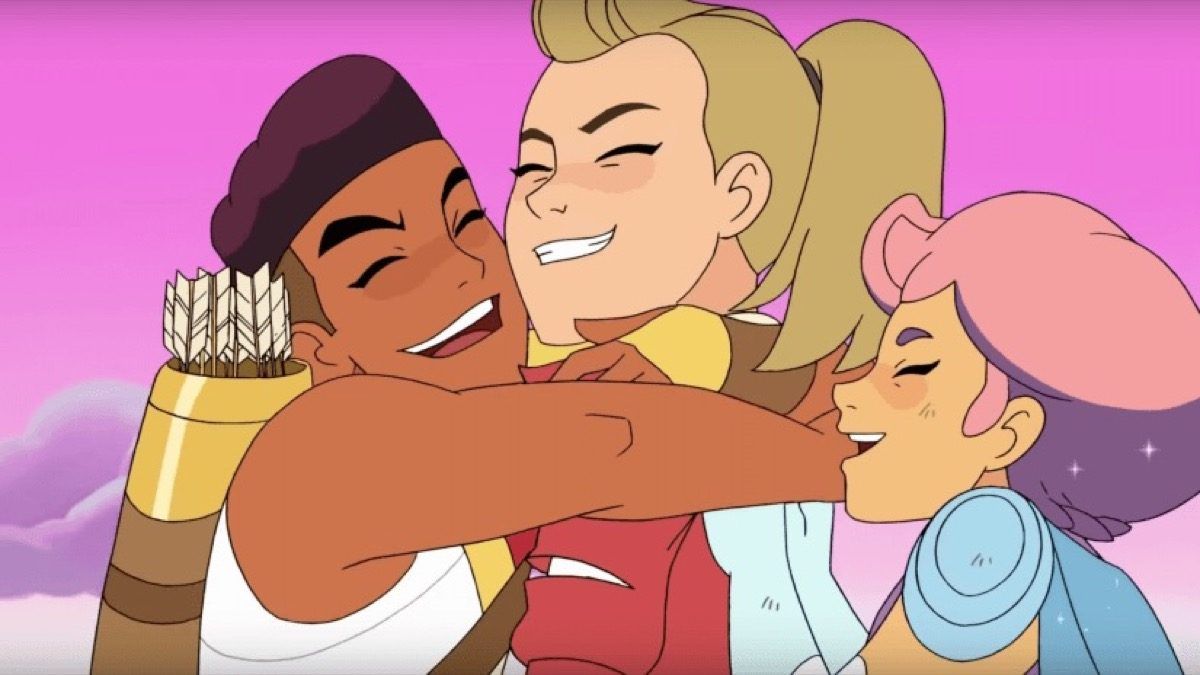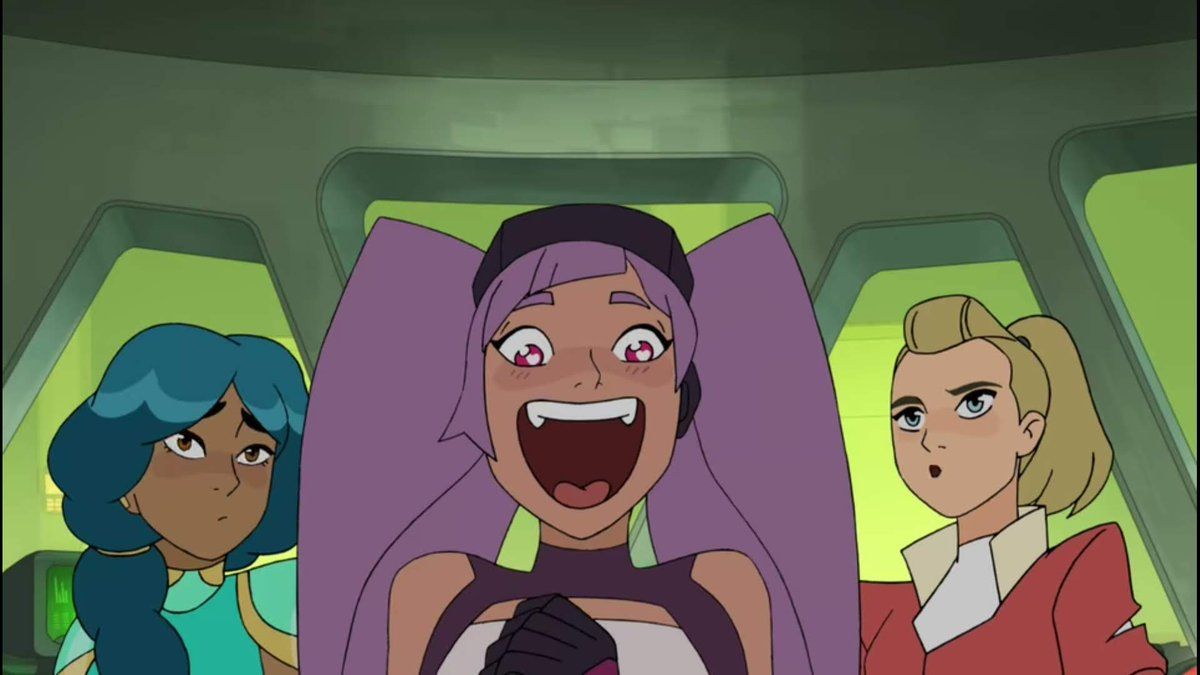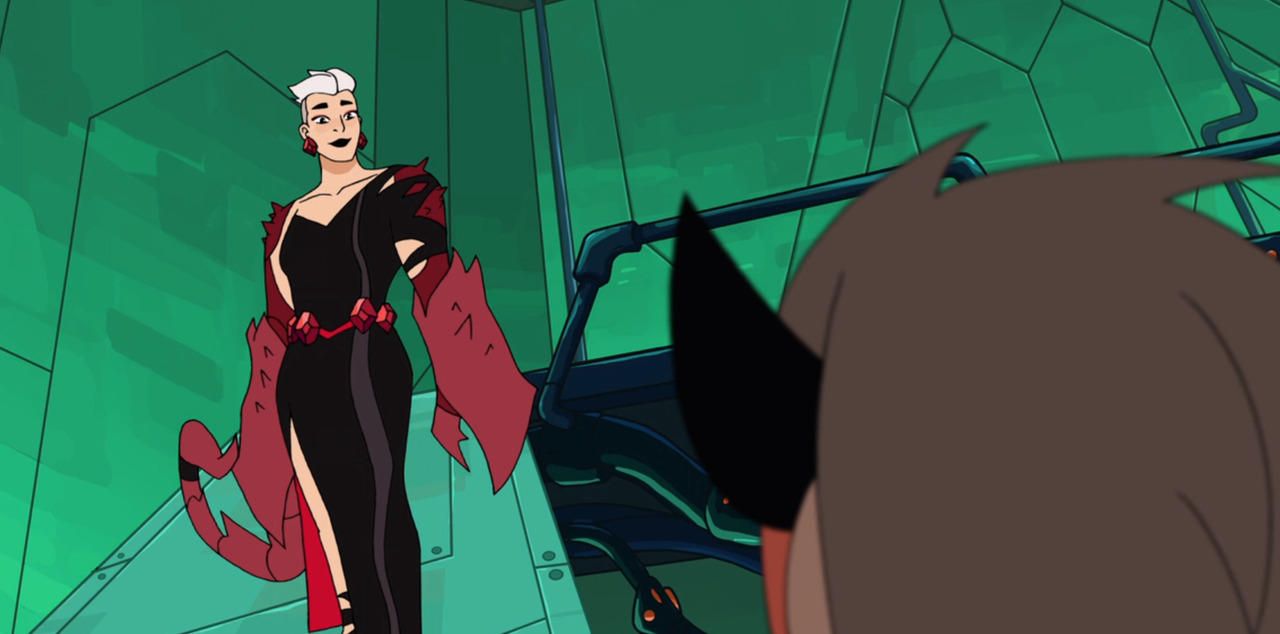After a ton of hype and a smattering of controversy, She-Ra and the Princesses of Power is finally available for viewing on Netflix. How does Dreamworks Animation and Noelle Stevenson's reimagining of the famous '80s cartoon stack up? It turns out the show's really good, though keep your expectations in check. It's not on the Avatar: The Last Airbender level of transcendence out the gate, though A:TLA is a clear influence. At least, it isn't yet that impressive on an adult level. Younger viewers may think differently; this is a show for kids and it's their enjoyment which ultimately matters the most.
There's still plenty of reason for curious older fans to check out the new She-Ra, though. The show strikes an entertaining balance between lighthearted adventure and darker themes, and it absolutely has the potential to get even better. The first season doesn't really do much wrong, so we don't have anything to be super negative about, but it does some things much better than others, so there's plenty of room for constructive criticism. It's already a far more impressive production than the ridiculous-in-hindsight Filmation cartoon; in most cases it's not even interesting to compare the two. More interesting comparisons come when contrasting it with contemporary cartoon obsessions like Voltron: Legendary Defender and Steven Universe. She-Ra might not be such an obsession yet, but there's enough potential here it could easily grow into one. Here are the show's ten best qualities and five that could use a little improvement.
15 LOVE: CATRA
Catra is far and away the most interesting character in She-Ra and the Princesses of Power. She's the one part of the show which rises above just very good into possibly amazing; she might be the most well-rounded and sympathetic cartoon antagonist since Prince Zuko in Avatar: The Last Airbender.
She loves Adora (either as a friend or something more; the subtext is strong) yet is overcome with jealousy. Treated far worse than her friend, she's also aware of how the Horde is evil from the start, yet she thinks she can gain power from within the Horde and can't believe Adora would leave her. Her development is complex, psychologically convincing and we can't wait to see where her story goes.
14 LOVE: DISTINCTIVE DESIGNS
Much has been said about the new She-Ra's diverse cast, but even ignoring any social good, there's a clear artistic good to having a cast with such varied body types: you can actually tell the characters apart. This is one of the basic principles of good character design, yet one the original She-Ra failed at (not the animators' fault, but the toy manufacturers, as so many characters were just the same toy mold with different hair attached).
The art style of the new series finds a happy medium between the anime-influenced stylings of an Avatar or Voltron and the graphic simplicity of Steven Universe or Noelle Stevenson's own comic art. Cute without being cutesy, the art fits the tone of the show perfectly.
13 NEEDS WORK: ANIMATION
While the design work is strong, the new She-Ra's actual animation could use a bit of work. It's not bad, by any means (again, an upgrade from the original), but in the first season it scarcely rises above average. One particular issue is that for an action show, the lighting is unusually flat with very few scenes standing as exceptions.
In general, the animation doesn't detract from the show, but it's a disappointment in comparison to fellow Dreamworks series Voltron and other modern action shows like The Legend of Korra. Maybe with Voltron coming to its conclusion soon, Dreamworks can pull more resources towards making She-Ra look great.
12 LOVE: MESSAGE OF ESCAPING ABUSIVE FAMILIES
Adora and Catra both grew up in the Horde under the manipulations of the sorceress Shadow Weaver. Adora was favored and fell easily for Shadow Weaver's brainwashing, while Catra experienced heavier abuse and saw through her commanding officer's lies. The first episodes of She-Ra show Adora awakening to the true evil nature of those who raised her, deciding to cut them off for her own good even though it's painful.
There might not be a ton of teenage supersoldiers watching She-Ra, but there almost certainly are kids who feel trapped in troubled homes watching this show. Like Harry Potter, Tangled and the works of Roald Dahl before it, the new She-Ra might just save the lives of kids dealing with troubled families.
11 LOVE: FUN POWERS
This might be more a credit to the conception of the franchise as a whole rather than to the particular inventions of this specific show. Still, She-Ra and the Princesses of Power entertains on the pure inner eight-year-old level of watching, just as the title implies, a bunch of princesses using cool powers.
This ensemble contains a sparkly teleporter, an inventor with magical hair, a mermaid, and princesses who can create ice and flowers. Even the powerless non-princess Bow gets to kick butt with his archery skills (he's more Sokka than Hawkeye when it comes to his usefulness to the group). As for She-Ra herself, she's still getting a hang of her abilities, but what we see of her attempts to harness them is fun (she creates a talking alicorn by accident!).
10 NEEDS WORK: ACTION SCENES
Though an action show by genre, it's clear much more effort went into the character drama than the actual fight scenes in She-Ra. This is a much preferable to the opposite -- focusing on action to the detriment of drama -- but why can't we have the best of both worlds?
Some of this is due to the relative weakness of the animation. Voltron is also more interested in the soap opera than the mech battles, but because of its stunning visuals at least one fight per season leaves viewers stunned. The show could also serve to give She-Ra more powerful enemies in future seasons, as most of the challenge is in Adora becoming She-Ra, and once transformed, fights typically end super-easily.
9 LOVE: SERIALIZATION
Netflix's push for binge-watching has had mixed effects on TV as a whole. Some critics argue Netflix dramas drag out ongoing stories too long and have forgotten the value of a good stand-alone episode. Animation on cable, however, has long had the opposite issue, with serialization being frowned upon (see how Adventure Time lost time-slots the more and more serialized it got).
With Netflix's animated shows, the two industries' issues have thankfully canceled each other out, allowing for a wave of great serialized cartoons that still structure individual episodes well. The first half of She-Ra season one contains a lot of relatively episodic adventures, while the second half excels at cliffhangers, providing a ton of character and plot development all the way through.
8 LOVE: SLOWLY BUILT MYTHOLOGY
Nerds love complex fantasy lore. General audiences want clear and understandable stories. Nobody likes clumsy overdone exposition dumps. Noelle Stevenson and her team of writers thankfully find the right balance of detail and clarity without relying overly on exposition.
The history of Etheria is still shrouded in mystery by the end of the season, but there's just enough hints of the planet's apocalyptic past that new fans will be intrigued to know more. Longtime Masters of the Universe fans will appreciate the little references to the mythology of the older series (even if the actual He-Man characters are off-limits due to rights reasons).
7 NEEDS WORK: SENSE OF SCALE
It's difficult to get a sense of just how big Etheria is from watching She-Ra. Given just how many different kingdoms there are with radically different ecosystems, you'd think it would be pretty large. However, there's no real sense of scale; characters travel seemingly instantaneously from one kingdom to the next.
In contrast, Avatar: The Last Airbender spent an entire season traveling from the South Pole to the North, and the journey gave a much stronger sense of its world. It's harder to get a sense of She-Ra's world than Avatar's, making a show supposed to be an epic adventure feel smaller than it's probably meant to feel.
6 LOVE: GLIMMER'S CHARACTER ARC
Here's an excellent example of how outstanding writing can elevate cliché-sounding material. "Headstrong girl rebels against overprotective mom to prove herself" is far from the most original story, yet Glimmer's struggles with her mother, Queen Angella, are portrayed with genuine heart and insight.
For one thing, Glimmer actually struggles in proving herself. Overexerting her powers has consequences for her health, making you can understand why her mother is so overprotective while also rooting for Glimmer to succeed against the odds. The reconciliation between the two is also impressively handled. After the Catra-Adora relationship, this is the most emotionally compelling part of the show.
5 LOVE: PRINCESS PROM
"Princess Prom," the eighth episode of the new She-Ra, is a major turning point for the series and the first great episode. The first half of the season quickly settles into a formula, each episode introducing a new princess for the Best Friends Squad to recruit into Princess Alliance. "Princess Prom" fits the formula, introducing Princess Frosta, but with so many other characters both established and present, the episode is more ambitious in its writing.
Bringing the She-Ra/Catra rivalry to new levels of intensity while addressing Glimmer's feelings of jealousy and inadequacy about Bow choosing another date, the episode is enjoyable from the start thanks largely to its sharp character work. It also brings about a surprise darker turn, sending the show into high gear.
4 NEEDS WORK: COMIC RELIEF
Any Masters of the Universe adaptation needs to have a sense of humor, given the camp ridiculousness of the source material. Ironically, intentional comedy can rarely match the the unintentional laughs the '80s Filmation cartoons inspire. Still, this is one area where the new She-Ra cartoon could try a bit harder.
There's just the right amount of comic relief in the show, but what there is tends to be more mildly amusing than outright hilarious. While the dramatic themes skew slightly more mature, the comedy is content to be in the "passable kids show" range. Stand-out characters like the blunt Mermista, overdramatic Seahawk and eccentric Entrapta do offer potential for stronger laughs in future seasons.
3 LOVE: BALANCE OF TONES
Even if elements could be improved, it's impressive how much She-Ra and the Princesses of Power clearly knows what it wants to be. It's this assuredness which makes the show easy to enjoy and hard to criticize much. Noelle Stevenson knows what she wants this show to be and has found what's probably the best formula for any potential She-Ra reboot.
The series is bright and colorful while also dealing in heavier themes. It can do self-contained stories and ongoing arcs. It's unapologetically feminine without alienating boys from enjoying it. Most importantly, it lets the characters drive the show, with the range of moods it covers developing naturally from the characters' journeys.
2 LOVE: MORAL COMPLEXITY
No one watching She-Ra is going to walk in the least bit confused about which side are the good guys and which side are the bad guys. Within this clash of good and extreme evil, though, characters are complex in their moralities. Adora's realization she was fighting for the bad guys and Catra's self-interested rise through the system she knows is bad are just some of the major ways the show complicates seemingly straightforward morality.
The story of Perfuma's kingdom challenges whether pacifism, a theoretically "good" ideology, is actually any good at all when faced with evil. Entrapta is a great example of a "Chaotic Neutral" character for whom morality doesn't even enter the equation of where her actions will lead her.
1 NEEDS WORK: ADDRESSING DISCRIMINATION
One moral complication which could make for an intriguing story but doesn't get nearly the time it needs to make an impact in season one is the idea that the Horde, despite its evil and abusive nature, provides a home for those outcast by the princesses. It's an interesting and disturbing idea, that the princesses' own bigotry is strengthening their enemies.
However, we never actually see the princesses act bigoted in any way, weakening this as a potential theme. The half-scorpion Scorpia talks about feeling more accepted in the Horde than elsewhere, and the promise of the Horde's acceptance proves tempting to the neuroatypical Entrapta, but it's hard to tell if this is a real issue or just Horde propaganda without witnessing the problem ourselves.

